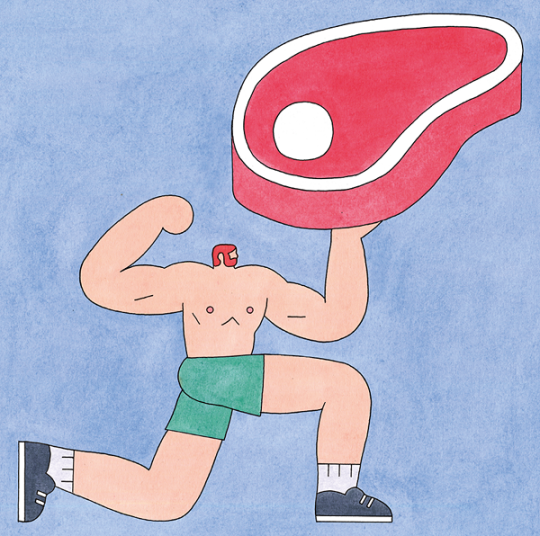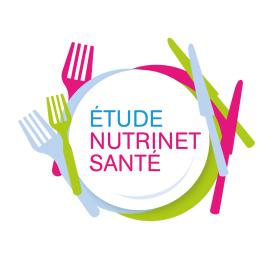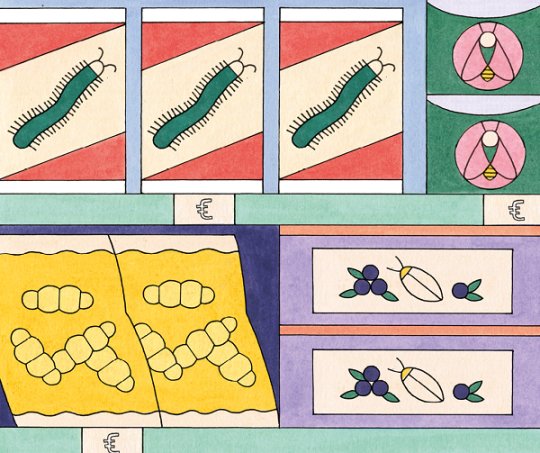Ressources dossier
Food, Global HealthAre consumers ready?
Published on 18 January 2023
Social representations, accessibility, psychological factors and collective dynamics: the act of eating is more than the ingestion of food. Our eating behaviour is both linked to our socio-cultural environment and subjected to psychological and physiological mechanisms.
Taste and conviviality at the heart of our behaviour
Pleasure is linked to the food itself, to the social context and to the representations associated with the food.
While food serves a vital need, it is also a source of gustatory and social pleasure when meals are shared at the table. This notion of pleasure is essential and plays a driving force in our choices: “pleasure is linked to the food itself, to the social context and to the representations associated with the food”, explains Sophie Nicklaus, an INRAE specialist in the study of eating behaviour at the Centre for Taste and Feeding Behavior (CSGA) in Dijon. A pleasure that can be taught from a very young age. INRAE is thus working with Santé publique France (the government agency for public health) on the dietary practices of parents to promote appropriate eating habits in children. This early food education is particularly important because the foundations of eating behaviour are laid during the first years of life, and the prevention of chronic diseases linked to food, such as obesity, is all the more effective the earlier it is implemented. Recent studies have shown that eating habits can be established as early as… during pregnancy! A study carried out on minipigs (an animal model close to humans in terms of physiology) has shown that a maternal diet during pregnancy and lactation, respecting a normal caloric intake but too rich in fat and sugar, has negative impacts on the lipid balance, the metabolic activity of the intestinal microbiota and leads to the production of neurons in an area involved in learning and memory in piglets. Thus, piglets fed this diet in utero were more motivated by fatty and sweet food rewards.
Learning to enjoy

repeated exposure to a food. A new, unknown food is a priori rejected. By repeating the exposure to this food and doing so in a familiar and friendly context, the chances of being accepted will increase: “This is for example the case of coffee, which is very bitter, but to which we are exposed regularly, at work during the coffee break, in the family circle. We are exposed to it in a positive context, which leads us to try this food again despite a taste that is not always appreciated at first”, explains Sandrine Monnery-Patris, a researcher in cognitive psychology at the CSGA. Thus, offering plant-based protein dishes in the canteen could help children appreciate these products, but only if it is in a positive environment. A major challenge is to raise awareness and train canteen staff regarding the context and environment of the meals, especially with regard to novel foods.
Overcoming social representation

The strength of social representations and our cultures guides our diets. As a result, the adoption of nutritional recommendations comes up against numerous psychological biases. For example, replacing meat, still very much present on Western menus, seems difficult for the consumer. Sandrine Monnery-Patris’ work explains this, showing that animal protein is associated with strength and virility, whereas plant protein is associated with lightness and femininity. In addition, meat is seen as the main element when we have to prepare a dish, whereas plant proteins (cereals, dried pulses) are seen as sides. In her opinion, these results explain why it is difficult for the consumer to replace a food that is synonymous with strength and at the centre of the dish with a food that is more associated with lightness and considered peripheral.
Among the beliefs that have a life of their own, we can mention the issue of the practicality of dried pulses. For the people interviewed as part of the researcher’s work, one obstacle to the consumption of these foods is their supposedly long preparation time, whereas in reality, there are now a good number of dishes based on legumes or cereals that do not require any additional preparation time. Another image to be challenged is that dried pulses are food for vegetarians or vegans...
To overcome these prejudices, the researcher points out that information and communication are effective means. It is a question of communicating on taste and proposing attractive and easy-to-make recipes.
Commitment as a driver for change
The level of education and the ability to learn and integrate new benchmarks are important factors for change.
Some consumers are committed to changing their diet, such as vegetarians or vegans. Benjamin Allès, an epidemiologist at the EREN research unit, explains that “among the motivations of people turning to a diet that limits or eliminates animal products, the most frequently reported are animal welfare, the environment and sometimes health”. The observations of the NutriNet-Santé study also indicate that nowadays the majority of people who exclude all or part of animal products from their diet belong to high socio-professional categories. This shows that the level of education and the ability to learn and integrate new benchmarks are important factors for change. However, the probability of adopting a vegan diet is rising among participants with a lower socio-economic level, suggesting a broadening of these categories of people. Furthermore, Stéphan Marette, an INRAE economist in the Paris-Saclay Applied Economics unit, points out that “even though consumers may be aware that for their health and that of the environment it is better to change their diet, and may be interested in the approach, this does not mean that they will respect these recommendations. In particular, they face limitations in terms of budgetary capacity, attentiveness when shopping and/or memorising complex information which often prevent them from turning to more virtuous foods.
Cost, a barrier to change?

Obviously, especially for those with small budgets. The average food budget observed among disadvantaged households is around €3.50 to €4 per day per person. According to Nicole Darmon, below this budget, “it is very difficult, if not impossible, to have a diet that meets all the nutritional recommendations”. These results were obtained by observing the purchases made by these households, but also through modelling. When a nutritionally good diet is modelled for the lowest possible price, the minimum is €3.85 per person per day for an adult. As for the average French food budget, it is €5 to €6 per day (excluding alcoholic beverages). In contrast, in Western countries, the shift to a more sustainable diet will result in a small decrease in the cost as a result of reduced meat consumption.
Because of all these obstacles, the researchers at INRAE insist on the importance of small steps to achieve the objectives set. As Stephan Marette points out, it is gradual changes that will facilitate the change of habits such as “original recipes, more pleasant meals in the canteen... In short, tricks that make it possible to incorporate modest but realistic changes”. And that, on a large scale, will bring about transitions.
NutriNet-Santé: the transition monitored on a daily basis

Impact of prices on consumption, organic or conventional products, environmental impacts, economic trade-offs linked to purchases... Since 2009, the NutriNet-Santé project has been studying the relationship between health and food, and in particular the sustainability of food according to individual lifestyles. This cohort is based on the monitoring of volunteers, who are regularly questioned via online questionnaires about their lifestyle, consumption, health and environment. “With more than 100,000 participants, the cohort allows us to obtain detailed behavioural analyses”, explains Emmanuelle Kesse-Guyot, research director at INRAE. And indeed, all types of profiles are represented: the employed and unemployed, students, retirees, vegetarians, flexitarians, vegans and so forth. Emmanuelle Kesse-Guyot concludes: “The people we are following have agreed to it, they are volunteers with a particular profile and they are more inclined to follow a balanced, sustainable and healthy diet... But we must see this cohort as a living lab! If these people are capable of approaching a healthy and sustainable diet, it means that the dietary transition is possible.”
Less cooking for more leisure time
In 25 years, the time spent cooking per day decreased from 68 minutes down to 55.
Social progress and the resulting lifestyles have greatly changed our eating habits since the second half of the 20th century. Fabrice Etilé, an INRAE economist at the Paris School of Economics (PSE) has studied the evolution of time spent cooking, together with Marie Plessz, an INRAE sociologist at the Centre Maurice Halbwachs (CMH). “We observe on average a decrease in cooking time between 1985 and 2010, going from 68 down to 55 minutes per day. 60% of the observed reduction is linked to the integration of women into the labour market.” Marie Plessz notes that the "meal norm”, consisting of three meals a day, at fixed times, and allowing the household to gather around the same table, has been maintained in France, unlike the United States. “The culinary culture of these two countries is known throughout the world. Even though it is very different, it is based on the idea that women are responsible for the food the family eats. We are still far from gender equality in this field: the decrease in the amount of time spent cooking by women has not been offset by an increase in the amount of time spent by men... It is a significant workload, unpaid and still largely invisible”, says the sociologist.
The decrease in the amount of time spent cooking, combined with the increase in income and education levels and the expansion of the agri-food industry, has favoured the development of ready-to-eat products at the expense of cooking from scratch. These ready-to-eat products “meet one of society’s demands: to have more free time”, says Fabrice Etilé.
Insects on the plate, is it possible?

Meat, eggs, fish, dairy products, dried pulses and cereals are the main sources of protein consumed in Western countries. To successfully feed the world’s growing population, other sources of protein are being explored, such as insects. Currently, about 2 billion people, mainly in Africa, Latin America and Asia, consume about 2,000 different species of insects worldwide. However, in Western countries, insects are not yet part of our menus because their consumption raises questions: health issues, as the European Food Safety Authority (EFSA) only issued a positive opinion in January 2021; and cultural issues, as the consumption of insects still comes up against social representations. In France, a few start-ups have embarked on insect production, but for Benjamin Allès, an epidemiologist at the EREN unit, “the most likely scenario is that insects will be consumed in the form of meal, or indirectly via the feed of farm animals, mainly for fish and chicken.”
-
Élodie Regnier / Anaïs Bozino
(Send email)
Authors / Translated by Alessandra Riva
Communications Department
